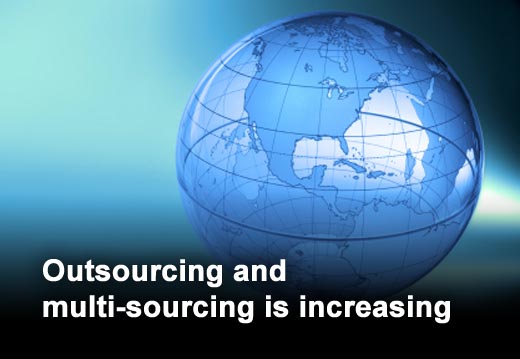A 2011 survey of over 2,500 CIOs and IT leaders by PA Consulting Group and Harvey Nash reveals that CIOs are playing an increasingly influential role within their organization. However, management boards are still demanding that CIOs save costs, increase operational efficiencies and deliver consistent and stable IT performance to the business.
If cost, efficiency and stability become a CIO’s sole focus and IT work is increasingly outsourced, then the future for those CIOs is as facilities managers. In PA’s view, keeping the lights on and reducing costs are only half the role.
The good news is that there is an opportunity for CIOs to take action and build on a trend of growing influence. The survey shows that 50 percent of CIOs now sit on the operational board or executive management team, almost 40 percent have seen their budgets grow over the past year and the same number have seen their salaries increase in the past 12 months.
This slideshow highlights the key market and internal forces that are shaping the landscape from the CIO perspective in 2011, as well as tips on how to achieve the right balance on the utility-to-innovation continuum.
Click through for results from a survey by PA Consulting Group and Harvey Nash focusing on the forces shaping the CIO landscape and tips on how to achieve the right balance between utility and innovation.
PA’s analysis of different managers' views about IT points to a leadership role for the CIO. The CEO is optimistic about IT on a number of fronts; for example, 77 percent see it as fundamental to competitiveness, as do 67 percent of CIOs. This compares to only 50 percent of non-IT managers. Only 38 percent of CEOs see IT as a commodity (and 30 percent of CIOs), compared to 51 percent of non-IT managers. The message appears to be that the CEO has high expectations from IT – more so than the rest of the business.
Almost three-quarters of survey respondents believe that if they do not innovate and embrace new technology, their company will lose market share. However, only 34 percent of CIOs think they have achieved anything close to their innovation potential – so there is clearly substantial scope for innovation within areas covered by the CIO’s remit.
This year, overall budgets are starting to increase again, with 39 percent of survey respondents reporting budget growth over the past 12 months. The intensity of focus on cost reduction is falling, with 7 percent fewer respondents citing this as a top priority than in 2010.
The survey highlights that almost half of UK CIOs (47 percent) are expecting to increase spend on outsourcing activity in 2011 and 43 percent are planning to increase their dependence on multi-sourcing in the next 12 months. While this trend is driven largely by cost cutting, PA’s view is that it also creates an opportunity for CIOs to innovate and collaborate with external parties.
In 2010, 51 percent of CIOs revealed they were considering using cloud computing. Despite the much cited benefits, in 2011 the survey still reveals a mixed picture of use, ranging from the 22 percent exploiting cloud for core business processes through to the 8 percent of organizations that have considered but discounted cloud for their organization. In PA’s view, this reflects the growing maturity and understanding of cloud, as CIOs start to understand where cloud can and cannot add value as part of their business model.
An organization’s position on the utility-to-innovation continuum is not fixed. In order to get the balance right, CIOs need to:
- Foster a shared understanding between IT and the business of the issues the CIO should be prioritizing. CIOs need to look ahead at the internal and external factors that will determine these issues and create a shared vision and understanding.
- Consider the current and ideal position of their organization on the utility-to-innovation continuum – CIOs should recognize that, before they can innovate successfully, they need to earn trust by getting the utility component of their activities right.
- Ensure their team can accomplish both utility and innovation activities concurrently and flexibly. These different types of activity require different approaches, skills and attitudes. For example, any kind of innovation requires an open culture of collaboration where the business is willing not only to take a risk but also to accept the possibility of failure.
Ultimately, an organization’s position on the continuum will reflect a series of movements as CIOs react and adapt to the forces shaping their environment. Those that get the balance right will ensure that they and their functions are on the path to increasing their influence in the business, rather than simply being facilities managers.









